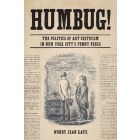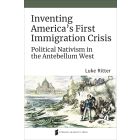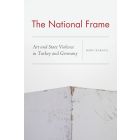A True American
William Walcutt, Nativism, and Nineteenth-Century Art

This book can be opened with

Arriving in New York City from small-town Ohio in 1847, William Walcutt produced prints, paintings and public sculptures that Wendy Katz argues were supported by circles hostile to “foreign” influences. Skillfully examining the output of this little-known figure against a society divided by slavery, immigration and religion, she makes a case for a “nativist iconography” pervading the broad swarth of his output: from periodical illustrations to his Commodore Oliver Hazard Perry Monument (Cleveland). Uniting artisan culture with elite patronage, Walcutt’s career provides Katz with an ideal lens for her fresh, insightful and timely study of antebellum American art.—Katherine Manthorne, Professor of Modern Art of the Americas, Graduate Center, City University of New York
Art history, cultural history, and political history are often taken as separate fields of inquiry. Professor Katz highlights their intersections. This resourcefully-researched study of mid-nineteenth century American artist and illustrator William Walcutt and his circle of New York City artists, artisans, and publishers traces the development of nationalist themes in antebellum popular art. It also reminds us that the creators and purveyors of art were, like many contemporaneous craftsmen, facing challenges posed by mechanization and emerging corporate power that led some of them to connect with the nationalist and nativist urges that helped fracture the traditional political landscape.—Dale T. Knobel, Professor of History Emeritus, Denison University.
The rise of hundreds of antebellum publications and their influence on political, economic, and social life can be compared to the twenty-four-hour news cycle and technology of recent decades. Perhaps Katz will in the future review our era in as much detail as this enlightening and engaging text. Throughout, Katz provides the American ideal and truthful identity developed through art, politics, and society. Art is a reflection of life and life is a reflection of art.—Journal of American History
An excellent study of impressive depth and intellectual insight, this volume will certainly be of great use to both scholars and serious students of the 19th-century visual culture of the US. Highly recommended.—Choice Reviews
A True American is of interest to scholars of the early republic beyond whatever relevance it has to twenty-first century discussions of nativism. It provides a wealth of visual sources for understanding the period as well as for teaching in the classroom, many of which have been under-examined by scholars. It is useful not only for scholars of nativism and anti-Catholicism but also for those interested in the history of the industrial book, providing a visual companion to the printed “mechanic accents” of the era. Moreover, A True American brings the visual culture of fraternal orders and artisan brotherhoods to life, allowing readers to glimpse the vibrant imagery that adorned these spaces.—Journal of the Early Republic
Facebook Twitter




